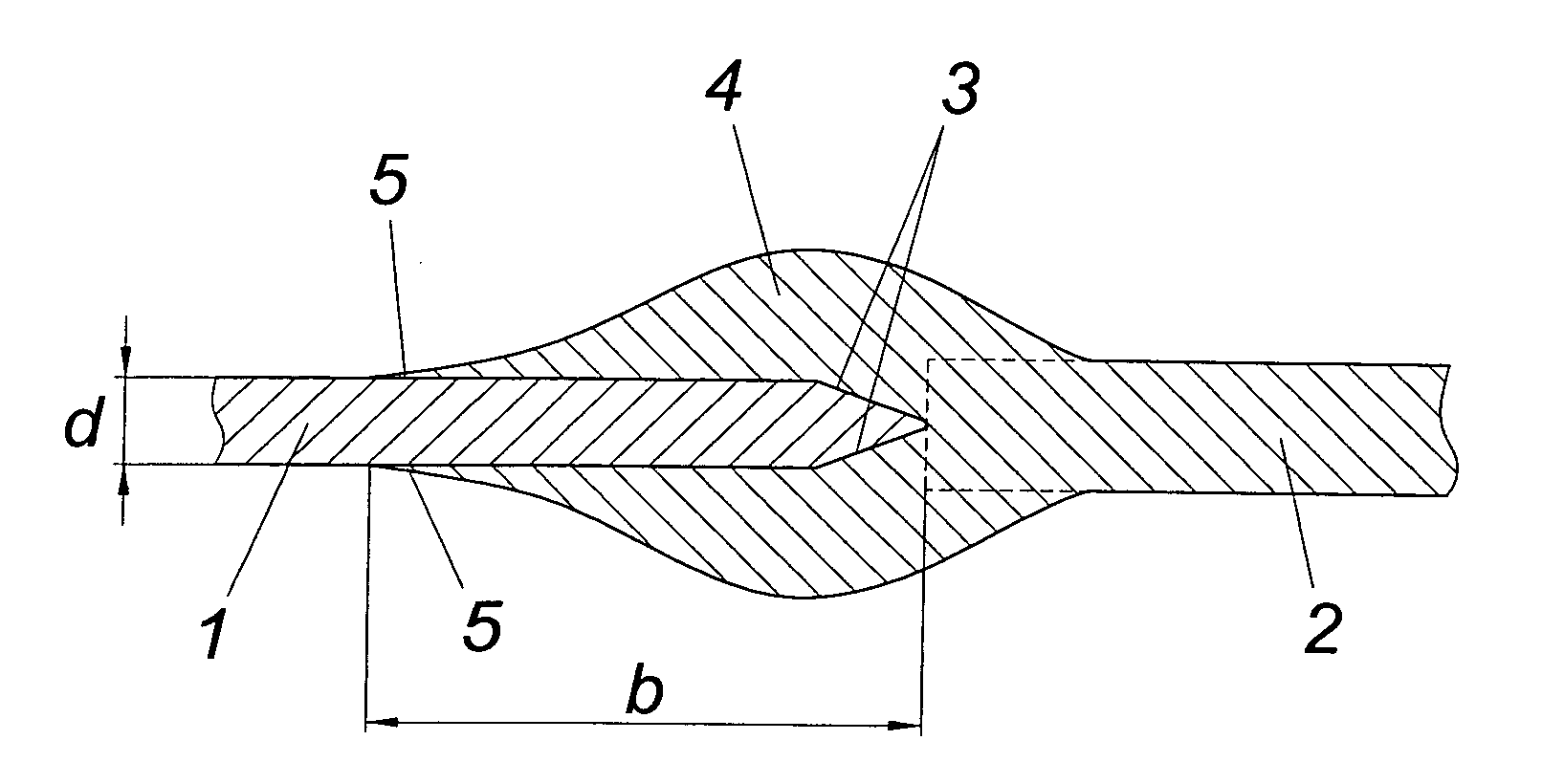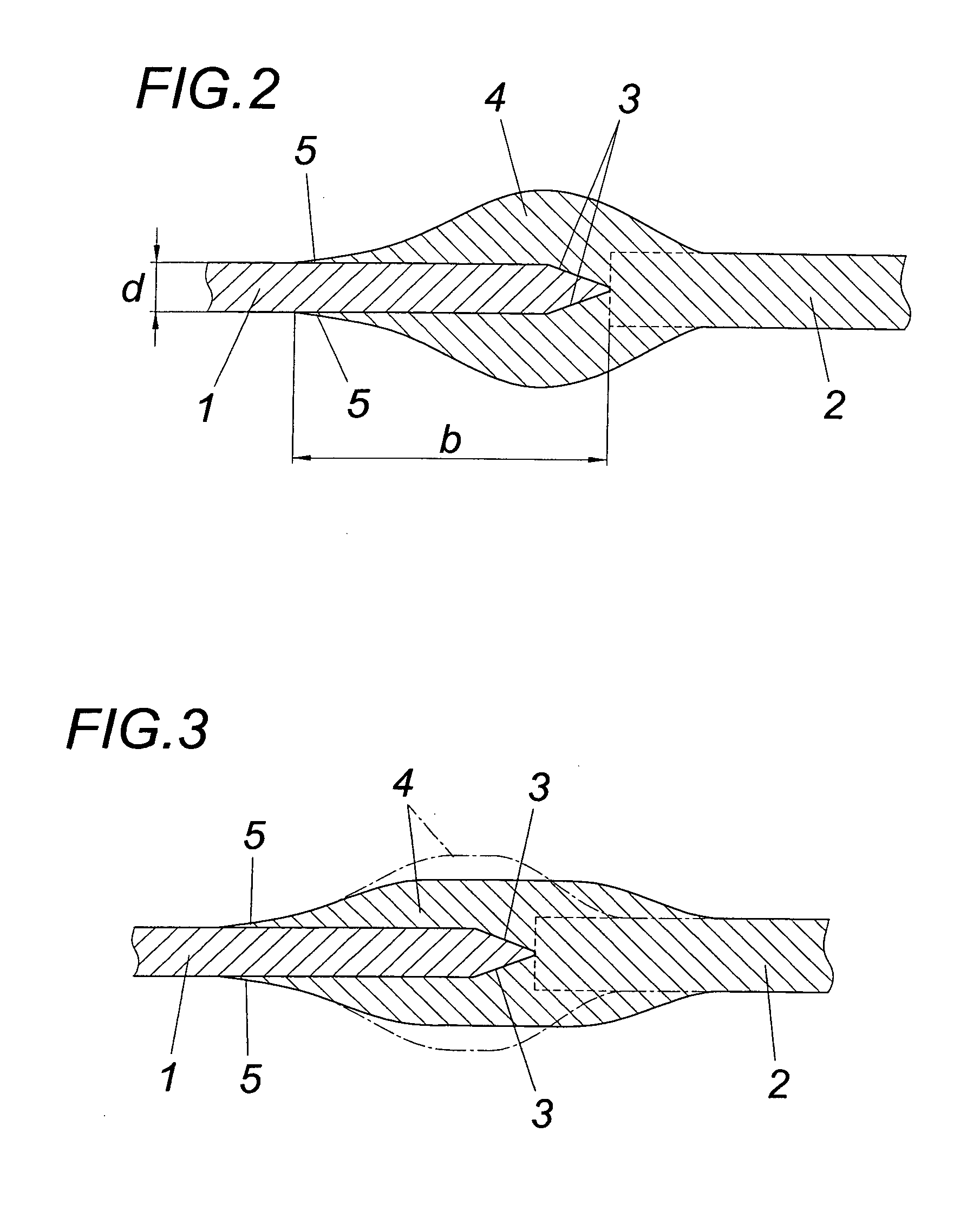Method for joining two metal sheets respectively consisting of an aluminum material and an iron or titanium materials by means of a braze welding joint
- Summary
- Abstract
- Description
- Claims
- Application Information
AI Technical Summary
Benefits of technology
Problems solved by technology
Method used
Image
Examples
Embodiment Construction
[0019] Plane sheet blanks 1 and 2 as are indicated in FIG. 1 are used for producing the subject as shown in FIG. 6, e.g. a profile support, from a cold-formed sheet blank 1 made of iron material and an also cold-formed sheet blank 2 made of an aluminum material. Said sheet blanks 1 and 2 are butt-joined. For this purpose the sheet blank 1 made of iron material is provided in the region of the edge forming the butt-joint with chamfers 3 on both sides, as is shown in FIG. 2. These chamfers 3 are provided with a coating preferably on the basis of zinc, like the other surfaces in the joining region. After joining the sheet blanks 1 and 2 to be joined, a filler on the basis of aluminum is applied to both sides of the blanks 1 and 2 in the joint region and molten with the help of an arc. A melt-metallurgical weld joint is obtained between the aluminum material of the sheet blank 2 and the filler on the basis of aluminum which forms the weld joint. This weld joint obtained by melting the a...
PUM
| Property | Measurement | Unit |
|---|---|---|
| Thickness | aaaaa | aaaaa |
| Deformation enthalpy | aaaaa | aaaaa |
Abstract
Description
Claims
Application Information
 Login to View More
Login to View More - R&D
- Intellectual Property
- Life Sciences
- Materials
- Tech Scout
- Unparalleled Data Quality
- Higher Quality Content
- 60% Fewer Hallucinations
Browse by: Latest US Patents, China's latest patents, Technical Efficacy Thesaurus, Application Domain, Technology Topic, Popular Technical Reports.
© 2025 PatSnap. All rights reserved.Legal|Privacy policy|Modern Slavery Act Transparency Statement|Sitemap|About US| Contact US: help@patsnap.com



